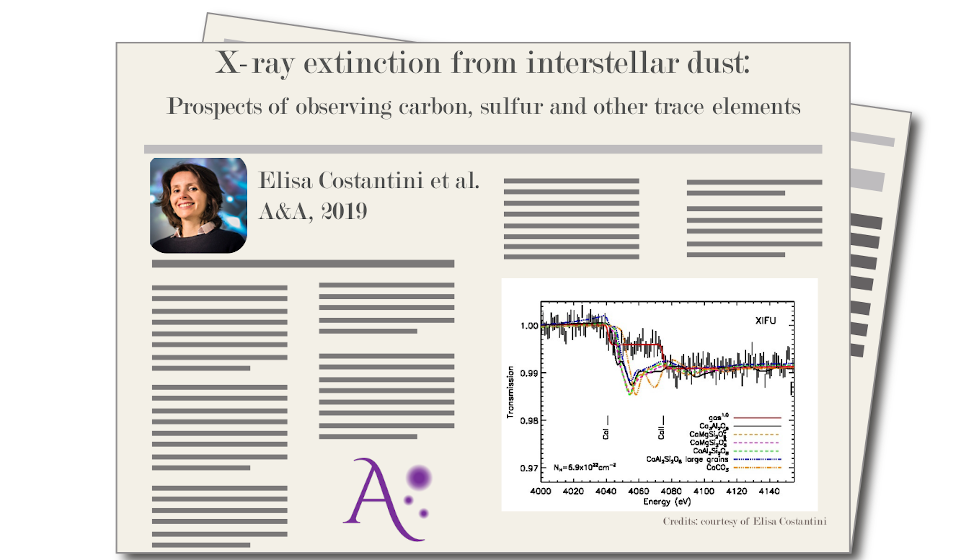
X-ray extinction from interstellar dust

By Elisa Costantini
In this paper, we investigate the capabilities of Athena/XIFU and other future instruments (namely XRISM and Arcus) to detect interstellar dust through high-resolution X-ray spectroscopy. We focus in particular on low-cosmic-abundance elements: Al, S, Ca, Ti and Ni. These elements have never been studied so far in the X-ray band. Athena capabilities to detect and study elements that are main players in dust composition (e.g., Si and Fe) are presented elsewhere (e.g. Decourchelle et al. 2013 and Rogantini et al. 2018). To study the intervening interstellar dust, bright X-ray background sources (as X-ray binaries) are used.
Athena/XIFU will study at best the elements located at E>1 keV. For them to produce a significant absorption feature, a large column density is required. This observational effect implies that we will access the larger column-density regions of our Galaxy, i.e. the environment of the Galactic center.
For Al and Ca, believed to be at the core of large interstellar silicates, Athena/XIFU will be able also to determine depletion and abundancies and distinguish among radically different compositions. We also to investigate the dust size distribution of the material along our line of sight. Sulfur is an elusive, extremely volatile, element whose exact depletion a composition in both the diffuse and dense ISM is not clear. Future instruments will be able to help to determine these quantities through the spectral absorption feature of sulfur in the X-ray band. Other elements that are completely locked in dust and produced in the late stage of the stellar evolution, like Titanium and Nickel will be challenging to study even with future facilities. This is mainly due to their extremely low abundance in the universe. Therefore their signature in the spectrum would be elusive.
The paper also describes how high-resolution spectroscopy in the soft X-ray band (e.g., with the Arcus mission-concept) will give us access to the carbon region at 0.28 keV. For the first time, we would be able to determine the carbon chemistry in the interstellar dust with X-rays.

